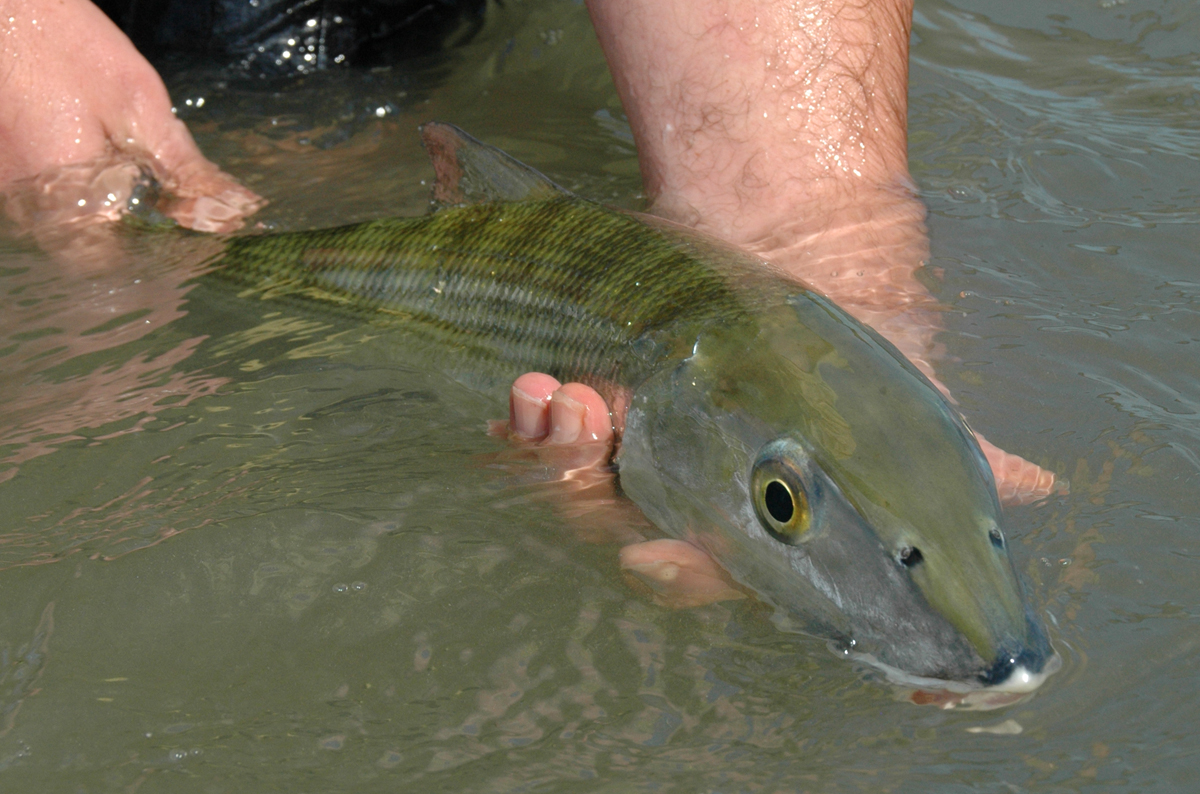April 11, 2013
By Doug Kelly
Checking the pulse of one of South Florida's favorite flats fish.
 Three years after the big cold snaps, bonefish are less common in some parts of the Keys.
Three years after the big cold snaps, bonefish are less common in some parts of the Keys.
Some Keys guides and flats experts have been pointing to a sharp fall-off in bonefish action in the past couple of years.
Bonefish are one of the most coveted flats species in the Florida Keys and Biscayne Bay, the only places in Florida where the species is abundant.
Recent state regulations prohibiting any take of bonefish (used to be a 1-fish bag) might be seen to suggest these fish have been disappearing into frying pans, but that's probably not the case.
Actually what's happened, most experts think, is Mother Nature delivered a bunch of these bony, scarcely edible fish to her own freezer.
“Bonefish are scarce compared with the pre-2010 winter cold snaps,” said Capt. Dexter Simmons of Key West, who used to find most flats from the Content Keys to the Mud Keys holding large pods of bonefish.
“For the past couple of years it's a lot more difficult to find them east of Key West,” he added.
Being cold-blooded, fish rely on a temperature comfort zone. Extreme heat or cold outside that zone shocks their metabolisms.
Flats are particularly susceptible to drastic temperature fluctuations because the lower the volume of water, the greater the impact. With many experts agreeing that water temperatures below 60 degrees are too cold for bonefish, the 2010 winter fronts that at times plummeted water to the low 50s really played havoc. Larval and juvenile bonefish were especially vulnerable.
“The 2010 winter event resulted in a significant mortality of many species including bonefish in shallower areas like Florida Bay and nearby marl flats,” said Aaron Adams, Executive Director of Bonefish & Tarpon Trust. “We're getting reports of fewer bonefish in many spots, which is likely due in part to the 2010 cold snap.”
Captain Lain Goodwin of Key Largo noted that effects of the frontal blasts varied from area to area. “After the cold snaps in 2010 I did notice a major decline,” said Goodwin. “I'd usually see from 20 to even 100 bones on a half-day trip, but now I'm lucky to find 10 to 20 on a good day. And yet on other flats in close proximity to Largo Sound, the bonefish population has remained steady.”
Luiz Barbieri, who oversees marine fisheries research at the Florida Fish & Wildlife Conservation Commission's Fish & Wildlife Research Institute, has yet to analyze any solid evidence to substantiate a recent dip in the abundance of Keys bones. “They may have indeed been impacted by the exceptionally cold conditions in early 2010, but we need an index of abundance to give us an idea of a trend line over time, and we're working toward that,” he said.
Even if the current reduction in bonefish stocks is factual, the Keys still remain the most viable region in Florida for flats fishing for the species. As one Marathon captain aptly put it, “It's a shame that bonefishing isn't what it used to be, but there's still a whole lot of good fishing opportunities
down here.”
